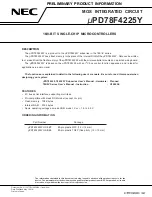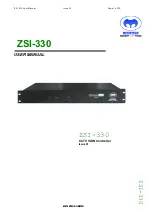
CHAPTER 3 CPU ARCHITECTURE
User’s Manual U16898EJ3V0UD
35
3.2.3 Special function registers (SFRs)
Unlike the general-purpose registers, each special function register has a special function.
The special function registers are allocated to the 256-byte area FF00H to FFFFH.
The special function registers can be manipulated, like the general-purpose registers, with operation, transfer, and
bit manipulation instructions. Manipulatable bit units (1, 8, and 16) differ depending on the special function register
type.
Each manipulation bit unit can be specified as follows.
•
1-bit manipulation
Describes a symbol reserved by the assembler for the 1-bit manipulation instruction operand (sfr.bit). This
manipulation can also be specified with the address and bit.
•
8-bit manipulation
Describes a symbol reserved by the assembler for the 8-bit manipulation instruction operand (sfr). This
manipulation can also be specified with an address.
•
16-bit manipulation
Describes a symbol reserved by the assembler for the 16-bit manipulation instruction operand. When specifying
an address, describe an even address.
Table 3-3 lists the special function registers. The meanings of the symbols in this table are as follows:
•
Symbol
Indicates the addresses of the implemented special function registers. It is defined as a reserved word in the
RA78K0S, and is defined as an sfr variable using the #pragma sfr directive in the CC78K0S. Therefore, these
symbols can be used as instruction operands if an assembler or integrated debugger is used.
•
R/W
Indicates whether the special function register can be read or written.
R/W: Read/write
R:
Read only
W: Write only
•
Number of bits manipulated simultaneously
Indicates the bit units (1, 8, and 16) in which the special function register can be manipulated.
•
After reset
Indicates the status of the special function register when a reset is input.
















































